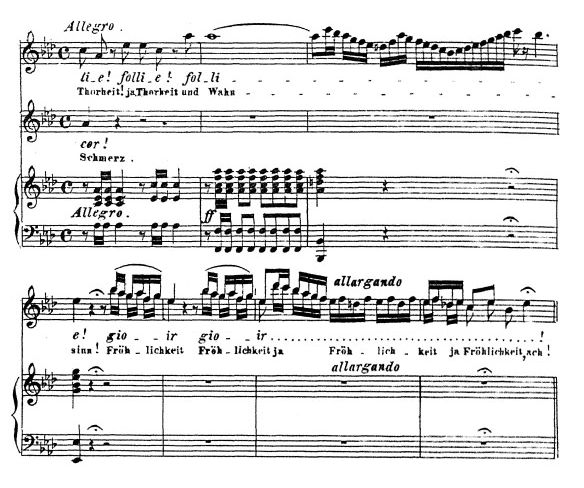
“Covering the Top”
A common myth meant to be helpful is that of “Covering” – related to vowel modification and how much to round or darken the vowels as the scale ascends.
It is a term that attempts to describe what it means to navigate the top of the voice. It is also something that one attempts “to do.” There are however some issues.
One issue is that no one can really describe what one actually “covers” except for pointing to the fact that something happens with the vowel, which is true. So, it seems that this analogy is not accurately able to describe the physical process that occurs when one navigates the top of the voice.
Another issue is determining the amount one “covers” on each note as the scale ascends is problematic. Trying to get the exact amount of “cover” and to appropriately modify the vowel implies that one knows exactly how much and when to cover or modify. This also implies that “doing” something overtly is healthy and in accord with how the voice operates.
I would suggest it would be more helpful to use the terminology of “turning the top” so as to attempt a more accurate description of what is occurring physically. Since most muscles of singing are involuntary, then the whole system must be treated as involuntary. That means that one cannot effectively “do” something to make the voice work. One must rather be led through a process whereby the voice is encouraged in spontaneous activity.
Certain exercises cause vocal muscles to react in a reflex-like action. When the singer does these exercises, the muscles respond. As the muscles are exercised, they respond with more accuracy and strength. The muscles themselves have an inborn logic where they know what to do, and when exercised according to the laws of physics they begin to do their “jobs” that gives us a feel which we begin to understand mentally.
As far as the top of the voice is concerned, there are changes that occur both in the vocal muscles (closer, stretcher, and cords) and in the vowels to allow access so that the singer makes a beautiful healthy sound. However, this process is not something to do, there is no way to cover anything or to accurately modify vowels overtly.
The process of navigating the top is when vocal muscles have been exercised in such a way as to allow the muscles to find their own balance. The singer then has a proper registrational adjustment. The registration tells the vowel how much to “modify” so as to not disturb muscular balance as the scale ascends. The important thing to note is that this navigation is not something we “do” but something that is allowed. Then, we get a feel that our brain and ears can remember as healthy.
All this to say, “covering” is more about “doing” and “turning the top” is more about “allowing” the subconscious to accomplish commands given by the conscious mind. This takes a minute to get, but once one is able to trust the muscles to do their job, then worries about how much and when will melt away.
about the author
Allen Rascoe Allen has been enjoying singing since he was a little kid. He officially studied voice at ECU and USC. However, he ran... Read More

RECENT ARTICLES
-

Career Your Opportunities for a Fulfilling Career in Singing
-

Basic Skills, Beginners, Tips Tips To Improve Your Singing Voice
-

Exercises, Warmups 10 Vocal Warm-ups to Change the Way You Sing
-

Basic Skills, Beginners, Exercises, Songs, Voice Teachers, Warmups What is My Vocal Range – Identify, Master and Expand Your Range
RECENT IN KNOWLEDGE
Recent Topics
- Beginning Voice Lessons (1)
- Breathing Techniques (1)
- Confidence (1)
- Experienced Teacher (1)
- Kids Singing Lessons (1)
- Musical Career (1)
- Practice (1)
- Private Lessons (1)
- Professional Singer (2)
- Sing (1)
- Singing Teachers (2)
- Style (1)
- Teach Online (1)
- Vocal Exercises (1)
- Vocal Health (1)
- Vocal Music (1)
- Vocal Pitch (3)
- Vocal Range (4)
- Voice Coach (1)
- Voice Exercises (2)
- Voice Training (4)
- Young Vocalist (1)
Categories
- Basic Skills (7)
- Beginners (8)
- Career (2)
- CCM (1)
- Contemporary Commercial Music (1)
- Crossing Over (1)
- Exercises (2)
- Online Lessons (3)
- Online Voice Lessons (1)
- Songs (2)
- Students (6)
- Tips (4)
- Vocal Coaches (1)
- Voice Teachers (2)
- Warmups (2)
Testimonials

















